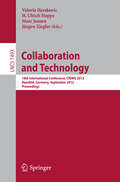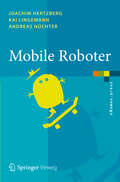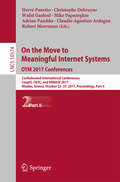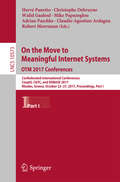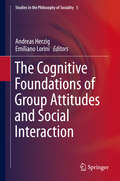- Table View
- List View
Data Transportation and Protection (Applications of Communications Theory)
by John E. Hershey Rao K. YarlagaddaA new breed of engineer is developing in our contemporary society. These engineers are concerned with communications and computers, economics and regulation. These new engineers apply themselves to data-to its pack aging, transmission, and protection. They are data engineers. Formal curricula do not yet exist for their dedicated development. Rather they learn most of their tools "on the job" and their roots are in computer engineering, communications engineering, and applied mathe matics. There is a need to draw relevant material together and present it so that those who wish to become data engineers can do so, for the betterment of themselves, their employer, their country, and, ultimately, the world-for we share the belief that the most effective tool for world peace and stability is neither politics nor armaments, but rather the open and timely exchange of information. This book has been written with that goal in mind. Today numerous signs encourage us to expect broader information exchange in the years to come. The movement toward a true Integrated Services Digital Network (ISDN) is perhaps the clearest of these. Also, the development offormal protocol layers reflects both a great deal of brilliance and compromise and also the desire for a common language among data engineers.
Avid Media Composer 6.x Cookbook
by Benjamin HershlederWritten in a Cookbook style, it's packed with logically-sequenced recipes to gain deeper understanding of the software. Each recipe contains step-by-step instructions followed by analysis of what was done in each task and other useful information. The book is designed so that you can read it chapter by chapter, or you can look at the list of recipes and refer to them in no particular order. If you are new to editing with Avid, this book will help you get the most out of Avid Media Composer right from the start. Even if you are intermediately experienced with Avid, you will discover new methods and gain a deeper understanding to take your Avid experience to the next level, with greater confidence.
Collaboration and Technology: 18th International Conference, CRIWG 2012, Raesfeld, Germany, September 16-19, 2012, Proceedings (Lecture Notes in Computer Science #7493)
by Valeria Herskovic H. Ulrich Hoppe Jürgen Ziegler Marc JansenThis book constitutes the proceedings of the 18th Collaboration Researchers' International Working Group Conference on Collaboration and Technology, held in Raesfeld, Germany, in September 2012. The 9 revised papers presented together with 12 short papers were carefully reviewed and selected from numerous submissions. They are grouped into five themes that represent collaborative learning, social media analytics, conceptual and design models, formal modeling and technical approaches and collaboration support in emergency scenarios.
Industrielle Dienstleistungen 4.0: HMD Best Paper Award 2015 (essentials)
by Matthias M. Herterich Falk Uebernickel Walter BrennerAuf Basis empirischer Daten von 45 konkreten Anwendungsfällen identifiziert dieses essential Nutzenpotentiale cyber-physischer Systeme im Kontext industrieller Dienstleistungen. Die Autoren nennen Implikationen und Handlungsempfehlungen für die Unternehmenspraxis. Die Leser erfahren, wie die fortschreitende Digitalisierung und der geschickte Einsatz cyber-physischer Systeme das Dienstleistungsgeschäft der produzierenden Industrie sowie im Maschinen- und Anlagenbau transformieren. Damit ergeben sich einerseits neue Möglichkeiten zur Effizienzsteigerung bereits bestehender Prozesse. Andererseits eröffnen sich bisher ungeahnte Möglichkeiten zur Umsetzung innovativer, datengetriebener industrieller Dienstleistungen.
Der ERP-Irrglaube im Mittelstand: Wie Sie als Entscheider das Thema ERP zum Erfolg führen
by Tobias Hertfelder Philipp FutterknechtERP-Systeme werden häufig als echte Wunderwaffen angepriesen, mit denen Unternehmen unkompliziert Kosten sparen und gleichzeitig noch Wachstum generieren. Dennoch laufen ERP-Projekte immer wieder teils komplett aus dem Ruder. In ihrem Buch zeigen Tobias Hertfelder und Philipp Futterknecht auf warum ERP Projekte zum Großteil keine IT- Themen sondern Chefsache sind. Denn ohne klare Richtung automatisiert man an dieser Stelle in die falsche Richtung. Warum beißen sich viele Unternehmen die Zähne an diesen Softwarelösungen aus? Lernen Sie, wie Sie Ihre eigene Strategie formulieren und erfahren Sie , wie erfolgreiche Transformationsprozesse in mittelständischen Organisationen ablaufen. Zudem zeigen die Autoren konkret auf, unter welchen Bedingungen die Implementierung eines ERP-Systems zum Scheitern verurteilt ist. All dies macht das Buch „Der ERP-Irrglaube im Mittelstand“ zu einem praktischen Leitfaden, der Ihnen hilft, die Wettbewerbsstärke und Umsatzrendite Ihres Unternehmens mit zukünftigen ERP-Entscheidungen zu steigern. Anschließend gehen die Autoren auf folgende Aspekte ein: • Arztbesuch: Warum einen Experten ins Haus holen, wenn ich gesund bin? • Diagnose Selbsterkenntnis: Ohne Ziele keine Maßnahmen • „Schuster, bleib bei deinen Leisten!“: Warum Sie lieber in Ihrem Kerngeschäft bleiben sollten • Wie Ihre Schatten-IT Ihr Geld verschlingt • Wachstumsschmerz: Nimmt Ihre Effizienz mit dem Wachstum ab? Dadurch lernen Sie, wie Sie in Ihrer Firma klare Genesungsziele definieren und Veränderungen herbeiführen. Schärfen Sie Ihren Blick dafür, wie Sie Wertschöpfungs- Potenziale erkennen und nutzen. Die Autoren liefern Ihnen die nötigen Ansätze, um eine konkrete Strategie zur Einführung von ERP selbst zu gestalten. Zu empfehlen ist dieses Werk speziell für:· Inhaber und Geschäftsführer von KMU · IT-Leiter in Unternehmen · Entscheider in mittelständischen Unternehmen · Studierende im Bereich Wirtschaftswissenschaft
KI 2007: 30th Annual German Conference on AI, KI 2007, Osnabrück, Germany, September 10-13, 2007, Proceedings (Lecture Notes in Computer Science #4667)
by Joachim Hertzberg Michael Beetz Roman EnglertThis book constitutes the thoroughly refereed proceedings of the 30th Annual German Conference on Artificial Intelligence, KI 2007, held in Osnabrück, Germany, September 2007. The papers are organized in topical sections on cognition and emotion, semantic Web, analogy, natural language, reasoning, ontologies, spatio-temporal reasoning, machine learning, spatial reasoning, robot learning, classical AI problems, and agents.
Mobile Roboter: Eine Einführung aus Sicht der Informatik (eXamen.press)
by Joachim Hertzberg Kai Lingemann Andreas NüchterMobile Roboter bewegen sich autonom im Raum. Die dafür notwendigen Berechnungen des Steuerungsprogramms beruhen wesentlich auf Sensordaten aus der Umgebung. Im Zentrum des Lehrbuchs stehen Algorithmen und Repräsentationen für die Steuerung mobiler Roboter. Aufbauend auf Kapiteln zu Sensorik und Sensordatenverarbeitung werden alle zentralen nicht-mechanischen Aspekte der Fortbewegung behandelt. Das erste Lehrbuch in deutscher Sprache zum Thema eignet sich nicht nur für das Bachelor-Studium, sondern auch zum Selbststudium und als Nachschlagewerk.
High-Performance Computing and Networking: 9th International Conference, HPCN Europe 2001, Amsterdam, The Netherlands, June 25-27, 2001, Proceedings (Lecture Notes in Computer Science #2110)
by Bob Hertzberger Alfons Hoekstra Roy WilliamsThis book constitutes the refereed proceedings of the 9th International Conference on High-Performance Computing and Networking, HPCN Europe 2001, held in Amsterdam, The Netherlands in June 2001.The 67 revised papers and 15 posters presented were carefully reviewed and selected from a total of almost 200 submissions. Among the areas covered are Web/grid applications of HPCN, end user applications, computational science, computer science, and Java in HPCN.
Organizational Implementation: The Design in Use of Information Systems (Synthesis Lectures on Human-Centered Informatics)
by Morten HertzumInformation systems are part and parcel of organizations. Yet, organizations often struggle to realize the benefits that motivate their introduction of these systems. To derive benefit from a new information system, it must be integrated into the structures and processes of the organization. That is, the system must be organizationally implemented. This book is about organizational implementation, which requires thorough preparations but also continues long after the system has gone live: (1) During the preparations, the implementation is planned. This phase includes specifying the effects pursued with the system, adapting the system and organization to each other, and obtaining buy-in for the planned change. (2) At go-live, the system is put to operational use and the associated organizational changes take effect. This phase is about insisting on the planned change even though go-live is normally hectic and accompanied by a productivity dip. (3) During continued use after go-live, implementation continues as design in use. This phase is long and improvisational. It includes following up on effects realization, but it is just as much about embracing the opportunities that emerge from using the system. Apart from covering the three phases of organizational implementation, the book inserts implementation in an organizational-change context and discusses barriers to implementation as well as boosters of implementation. The book concludes with an outlook to larger-scale issues beyond the implementation of one system in one organization and with an overview of the competences needed in the implementation team, which runs the organizational implementation.
Usability Testing: A Practitioner's Guide to Evaluating the User Experience (Synthesis Lectures on Human-Centered Informatics)
by Morten HertzumIt is all too common for products, such as consumer appliances, information systems, mobile apps, and websites, to cause trouble and frustration. For example, products are often difficult or dull to use, make tasks less flexible or more tedious, shift attention away from important or gratifying activities, and simply fail to deliver expected benefits or experiences. By identifying such trouble and frustration in the lab prior to widespread use, usability tests have proven a valuable method for informing redesign efforts. A usability test consists of having test users exercise a product and think aloud about their experience using it, while an evaluator observes the users and listens in on their thoughts. On this basis the evaluator identifies usability problems and assesses the user experience. This book describes how to conduct usability tests. After providing context about concepts and testing, the main chapters of the book cover the steps involved in preparing for a usability test, executing the test sessions, and analyzing the test data. Throughout the chapters, concrete guidance is balanced against more complex issues with an impact on the robustness, validity, completeness, impact, and cost of a usability test. The book concludes with an outlook to variations of usability testing and alternatives to it.
Ubiquitous Computing and Ambient Intelligence: 8th International Conference, UCAmI 2014, Belfast, UK, December 2-5, 2014, Proceedings (Lecture Notes in Computer Science #8867)
by Ramón Hervás José Bravo Sungyoung Lee Chris NugentThis book constitutes the refereed proceedings of the 8th International Conference on Ubiquitous Computing and Ambient Intelligence, UCAmI 2014, held in Belfast, UK, in December 2014.The 57 papers presented together with 7 papers of the workshop AmIUA 2014, 8 papers of the workshop IoT 2014, 7 papers of the workshop EUSPAI 2014, and 6 papers of the workshop VSS 2014 were carefully reviewed and selected from numerous submissions. The papers are grouped in topical sections on key application domains for ambient intelligence, human interaction in ambient intelligence, ICT instrumentation and middleware support for smart environments and objects, adding intelligence for environment adaption, and security and privacy issues in AAL.
Ambient Intelligence for Health: First International Conference, AmIHEALTH 2015, Puerto Varas, Chile, December 1-4, 2015, Proceedings (Lecture Notes in Computer Science #9456)
by Ramón Hervás José Bravo Vladimir VillarrealThis book constitutes the refereed conference proceedings of the First International Conference on Ambient Intelligence for Health, AmIHEALTH 2015, held in Puerto Varas, Chile, in December 2015. The 20 revised full papers and 9 short papers were reviewed and selected from 32 submissions and cover topics on technologies for implementing AmIHealth environments; frameworks related with AmIHealth environments; applied algorithms in e-Health systems; interactions within the AmIHealth environments; applications and case studies of AmIHealth environments; and metrics for health environments.
On the Move to Meaningful Internet Systems. OTM 2017 Conferences: Confederated International Conferences: CoopIS, C&TC, and ODBASE 2017, Rhodes, Greece, October 23-27, 2017, Proceedings, Part II (Lecture Notes in Computer Science #10574)
by Hervé Panetto, Christophe Debruyne, Walid Gaaloul, Mike Papazoglou, Adrian Paschke, Claudio Agostino Ardagna and Robert MeersmanThis double volumes LNCS 10573-10574 constitutes the refereed proceedings of the Confederated International Conferences: Cooperative Information Systems, CoopIS 2017, Ontologies, Databases, and Applications of Semantics, ODBASE 2017, and Cloud and Trusted Computing, C&TC, held as part of OTM 2017 in October 2017 in Rhodes, Greece.The 61 full papers presented together with 19 short papers were carefully reviewed and selected from 180 submissions. The OTM program every year covers data and Web semantics, distributed objects, Web services, databases, information systems, enterprise workflow and collaboration, ubiquity, interoperability, mobility, grid and high-performance computing.
On the Move to Meaningful Internet Systems. OTM 2017 Conferences: Confederated International Conferences: CoopIS, C&TC, and ODBASE 2017, Rhodes, Greece, October 23-27, 2017, Proceedings, Part I (Lecture Notes in Computer Science #10573)
by Hervé Panetto, Christophe Debruyne, Walid Gaaloul, Mike Papazoglou, Adrian Paschke, Claudio Agostino Ardagna and Robert MeersmanThis double volumes LNCS 10573-10574 constitutes the refereed proceedings of the Confederated International Conferences: Cooperative Information Systems, CoopIS 2017, Ontologies, Databases, and Applications of Semantics, ODBASE 2017, and Cloud and Trusted Computing, C&TC, held as part of OTM 2017 in October 2017 in Rhodes, Greece.The 61 full papers presented together with 19 short papers were carefully reviewed and selected from 180 submissions. The OTM program every year covers data and Web semantics, distributed objects, Web services, databases, information systems, enterprise workflow and collaboration, ubiquity, interoperability, mobility, grid and high-performance computing.
Hydrodynamics of Free Surface Flows: Modelling with the Finite Element Method
by Jean-Michel HervouetA definitive guide for accurate state-of-the-art modelling of free surface flows Understanding the dynamics of free surface flows is the starting point of many environmental studies, impact studies, and waterworks design. Typical applications, once the flows are known, are water quality, dam impact and safety, pollutant control, and sediment transport. These studies used to be done in the past with scale models, but these are now being replaced by numerical simulation performed by software suites called “hydro-informatic systems”. The Telemac system is the leading software package worldwide, and has been developed by Electricité de France and Jean-Michel Hervouet, who is the head and main developer of the Telemac project. Written by a leading authority on Computational Fluid Dynamics, the book aims to provide environmentalists, hydrologists, and engineers using hydro-informatic systems such as Telemac and the finite element method, with the knowledge of the basic principles, capabilities, different hypotheses, and limitations. In particular this book: presents the theory for understanding hydrodynamics through an extensive array of case studies such as tides, tsunamis, storm surges, floods, bores, dam break flood waves, density driven currents, hydraulic jumps, making this a principal reference on the topic gives a detailed examination and analysis of the notorious Malpasset dam failure includes a coherent description of finite elements in shallow water delivers a significant treatment of the state-of-the-art flow modelling techniques using Telemac, developed by Electricité de France provides the fundamental physics and theory of free surface flows to be utilised by courses on environmental flows Hydrodynamics of Free Surface Flows is essential reading for those involved in computational fluid dynamics and environmental impact assessments, as well as hydrologists, and bridge, coastal and dam engineers. Guiding readers from fundamental theory to the more advanced topics in the application of the finite element method and the Telemac System, this book is a key reference for a broad audience of students, lecturers, researchers and consultants, right through to the community of users of hydro-informatics systems.
Snowflake Security: Securing Your Snowflake Data Cloud
by Ben Herzberg Yoav CohenThis book is your complete guide to Snowflake security, covering account security, authentication, data access control, logging and monitoring, and more. It will help you make sure that you are using the security controls in a right way, are on top of access control, and making the most of the security features in Snowflake. Snowflake is the fastest growing cloud data warehouse in the world, and having the right methodology to protect the data is important both to data engineers and security teams. It allows for faster data enablement for organizations, as well as reducing security risks, meeting compliance requirements, and solving data privacy challenges. There are currently tens of thousands of people who are either data engineers/data ops in Snowflake-using organizations, or security people in such organizations. This book provides guidance when you want to apply certain capabilities, such as data masking, row-level security, column-level security, tackling role hierarchy, building monitoring dashboards, etc., to your organizations. What You Will Learn Implement security best practices for SnowflakeSet up user provisioning, MFA, OAuth, and SSOSet up a Snowflake security modelDesign roles architectureUse advanced access control such as row-based security and dynamic maskingAudit and monitor your Snowflake Data Cloud Who This Book Is For Data engineers, data privacy professionals, and security teams either with security knowledge (preferably some data security knowledge) or with data engineering knowledge; in other words, either “Snowflake people” or “data people” who want to get security right, or “security people” who want to make sure that Snowflake gets handled right in terms of security
Inclusion Methods for Nonlinear Problems: With Applications in Engineering, Economics and Physics (Computing Supplementa #16)
by Jürgen HerzbergerThis workshop was organized with the support of GAMM, the International Association of Applied Mathematics and Mechanics, on the occasion of J. Herzberger's 60th birthday. GAMM is thankful to him for all the time and work he spent in the preparation and holding of the meeting. The talks presented during the workshop and the papers published in this volume are part of the field of Verification Numerics. The important subject is fostered by GAMM already since a number of years, especially also by the GAMM FachausschuB (special interest group) "Rechnerarithmetik und Wissenschaft liches Rechnen". GiHz Alefeld Karlsruhe, Dezember 2001 (President of GAMM) Preface At the end of the year 2000, about 23 scientists from many countries gathered in the beautiful city of Munich on the occasion of the International GAMM Workshop on "Inclusion Methods for Nonlinear Problems with Applications in Engineering, Economics and Physics" from December 15 to 18. The purpose of this meeting was to bring together representatives of research groups from Austria, Bulgaria, China, Croatia, Germany, Japan, Russia, Ukraine and Yugoslavia who in a wider sense work in the field of calculating numerical solutions with error-bounds. Most of those participants have already known each other from earlier occasions or closely cooperated in the past. Representatives from three Academies of Sciences were among the speakers of this conference: from the Bulgarian Academy, the Russian Academy and the Ukrainian Academy of Sciences.
Foundations of Information and Knowledge Systems: 11th International Symposium, FoIKS 2020, Dortmund, Germany, February 17–21, 2020, Proceedings (Lecture Notes in Computer Science #12012)
by Andreas Herzig Juha KontinenThis book constitutes the refereed proceedings of the 11th International Symposium on Foundations of Information and Knowledge Systems, FoIKS 2020, held in Dortmund, Germany, in February 2020.The 19 revised full papers presented were carefully reviewed and selected from 33 submissions. The papers address various topics such as big data; database design; dynamics of information; information fusion; integrity and constraint management; intelligent agents; knowledge discovery and information retrieval; knowledge representation, reasoning and planning; logics in databases and AI; mathematical foundations; security in information and knowledge systems; semi-structured data and XML; social computing; the semantic web and knowledge management; and the world wide web.
The Cognitive Foundations of Group Attitudes and Social Interaction (Studies in the Philosophy of Sociality #5)
by Andreas Herzig Emiliano LoriniThis book offers a widely interdisciplinary approach to investigating important questions surrounding the cognitive foundations of group attitudes and social interaction. The volume tackles issues such as the relationship between individual and group attitudes, the cognitive bases of group identity and group identification and the link between emotions and individual attitudes.This volume delves into the links between individual attitudes (such as beliefs, goals and intentions) and how they are reflected in shared attitudes where common belief, collective acceptance, joint intentions, and group preferences come into play. It pursues answers to the connections between trust and beliefs, goals and intentions and attempts to investigate questions such as: does trust have an affective component and how it may relate to hope and fear? The volume also scrutinizes game theory and questions whether it can satisfactorily explain and model social interaction and if there may be any concepts which are not addressed by the current theory. Contributors are derived from disciplines including philosophy, economics, psychology, logic and computer science. Interdisciplinary in scope and comprehensive detail, this volume integrates a variety of approaches – philosophical, psychological and artificial intelligence – to strategic, normative and emotional aspects of social interaction.
Logic and Argumentation: 5th International Conference, CLAR 2023, Hangzhou, China, September 10-12, 2023, Proceedings (Lecture Notes in Computer Science #14156)
by Andreas Herzig Jieting Luo Pere PardoThis book constitutes the refereed proceedings of the 5th International Conference on Logic and Argumentation, CLAR 2023, held in Hangzhou, China, during September 10-12, 2023. The 11 full papers, one short paper and one invited paper presented in this book were carefully reviewed and selected from 20 submissions. The papers focus on topics such as: logic and automated deduction; abstract and structured argumentation; dialogues, games and practical reasoning; and quantitative argumentation.
Frontiers of Combining Systems: 12th International Symposium, FroCoS 2019, London, UK, September 4-6, 2019, Proceedings (Lecture Notes in Computer Science #11715)
by Andreas Herzig Andrei PopescuThis book constitutes the proceedings of the 12th International Symposium on Frontiers of Combining Systems, FroCoS 2019, held in London, UK, in September 2019, colocated with the 28th International Conference on Automated Reasoning with Analytic Tableaux and Related Methods, TABLEAUX 2019. The 20 papers presented were carefully reviewed and selected from 30 submissions. They present research on the development of techniques and methods for the combination and integration of formal systems, their modularization and analysis. The papers are organized in the following topical sections: automated theorem proving and model building, combinations of systems, constraint solving, description logics, interactive theorem proving, modal and epistemic logics, and rewriting and unification.
Information Security in Healthcare: Managing Risk (HIMSS Book Series)
by Terrell W. HerzigInformation Security in Healthcare is an essential guide for implementing a comprehensive information security management program in the modern healthcare environment. Combining the experience and insights of top healthcare IT managers and information security professionals, this book offers detailed coverage of myriad
Information Security in Healthcare: Managing Risk (HIMSS Book Series)
by Terrell W. HerzigInformation Security in Healthcare is an essential guide for implementing a comprehensive information security management program in the modern healthcare environment. Combining the experience and insights of top healthcare IT managers and information security professionals, this book offers detailed coverage of myriad
Implementing Information Security in Healthcare: Building a Security Program (HIMSS Book Series)
by Terrell Herzig Tom WalshImplementing Information Security in Healthcare: Building a Security Program offers a critical and comprehensive look at healthcare security concerns in an era of powerful computer technology, increased mobility, and complex regulations designed to protect personal information. Featuring perspectives from more than two dozen security experts, the book explores the tools and policies healthcare organizations need to build an effective and compliant security program. Topics include information security frameworks, risk analysis, senior management oversight and involvement, regulations, security policy development, access control, network security, encryption, mobile device management, disaster recovery, and more. Information security is a concept that has never been more important to healthcare as it is today. Special features include appendices outlining potential impacts of security objectives, technical security features by regulatory bodies (FISMA, HIPAA, PCI DSS and ISO 27000), common technical security features, and a sample risk rating chart.
Implementing Information Security in Healthcare: Building a Security Program (HIMSS Book Series)
by Terrell Herzig Tom WalshImplementing Information Security in Healthcare: Building a Security Program offers a critical and comprehensive look at healthcare security concerns in an era of powerful computer technology, increased mobility, and complex regulations designed to protect personal information. Featuring perspectives from more than two dozen security experts, the book explores the tools and policies healthcare organizations need to build an effective and compliant security program. Topics include information security frameworks, risk analysis, senior management oversight and involvement, regulations, security policy development, access control, network security, encryption, mobile device management, disaster recovery, and more. Information security is a concept that has never been more important to healthcare as it is today. Special features include appendices outlining potential impacts of security objectives, technical security features by regulatory bodies (FISMA, HIPAA, PCI DSS and ISO 27000), common technical security features, and a sample risk rating chart.


